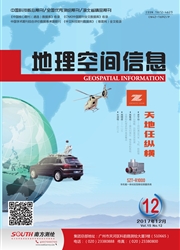

 中文摘要:
中文摘要:
利用高分一号遥感影像与实地调查数据,结合地理、地质和气象等数据,采用突变理论综合评价方法建立了矿山地质环境评价指标体系,并将其应用于研究区内红格铁矿、马鞍山铁矿、潘家田铁矿、百草铁矿、小黑箐铁矿、阳雀箐铁矿和秀水河铁矿等7个典型矿山的地质环境评价中。结果表明,应用该方法的评价结果和矿山的实地调查结果吻合,与应用较广泛的模糊数学综合评价结果一致。与其它评价方法相比,突变理论综合评价法人为干预较少、不用确定指标权重、计算简单且可以适用于大范围的矿山地质环境评价,为矿山地质环境综合评价提供了新方法。
 英文摘要:
英文摘要:
Using GF-1 satellite images, field survey data, and ancillary materials include geographic, geologic, and meteorological data, this paper use catastrophe theory on establishing integrated evaluation index system for mining geological environment. This evaluation system is then utilized by seven typical vanadium titanomagnetite mining areas, namely, Honge, Ma' anshan, Panjiatian, Baicao, Xiaotingjing, Yangquejing, and Xiushuihe. Research results indicate that, evaluation results provide by this method corresponds to field survey result, which also shows similarity with results supported by widely applied fusion mathematic models. Compared with other methods, catastrophe theory integrated evaluation system is free from human disturbance, while abandoning assigned index weights and simplifying calculation process, thereby, it is suitable for large scale geological environment evaluation for mining area. In a conclusion, this paper provides a new integrated evaluation method for geological environment of mining areas.
 同期刊论文项目
同期刊论文项目
 同项目期刊论文
同项目期刊论文
 期刊信息
期刊信息
